We all know the classic ladybug or ladybird, as it is sometimes called. These bugs have a peculiar appearance with their scarlet body and black dots. Ladybugs exist in all kinds of colors, but how do you know if a specific color is a Ladybug – or orange ladybugs – something else?
Why Are Orange Ladybugs Orange? Orange Ladybugs could indeed be a specific type of Ladybug. But the Squash and Cucumber Beetles can also be orange and these are not beneficial insects. But how significant is an orange Ladybug compared to a red one? Let’s look at all of them and identify what you might have.
So what makes Ladybugs appear in different colors? I was intrigued to know why orange ladybugs aren’t just red in color, and what’s different about orange ladybugs from red Ladybugs! Surely they’re all just Ladybugs?
Orange Ladybug
There is a lot more to know about the ‘possibly’ orange Ladybug and ladybugs in general. These creatures are fascinating and learning more about them is interesting.
Here are some typical orange ladybugs you might find.
Why An Orange Ladybug is Orange?
Why is the Orange Ladybug Orange? Good question, it’s simply down to the diversification of many varieties of Ladybugs over a long time period.
The species evolves like any other would – including humans. With this comes strands of DNA that begin to change over that period. These have simply broken away to form new color strands.
Because of this diversification, aside from the traditional deep red colored bugs, you can find ladybugs in colors such as white, black, grey, orange, yellow, brown, and more.

Ever seen a Green Ladybug?
Does Being Orange Make a Difference?
Other than being a different species, the color does matter. The color of any type of Ladybug can make a slight difference. The Ladybug color denotes its toxicity to predators. The brighter and more vibrant the color, the more toxic the smell and taste.
Also, a Ladybug that looks a little
Orange Ladybug – Asian Lady Beetle
The Asian lady beetle can be an orange ladybug. Its scientific name is Harmonia axyridis, also known as Harlequin in the UK. As the name suggests, these bugs are native to the Asian region. They originate from countries such as China, Russia, Korea, and Japan.
The orange ladybug is also called the Japanese Ladybug, or Japanese Lady Beetle.
Typically, the orange ladybug (or as we now know, the Asian lady beetle) is about 1/3 of an inch (7-10mm) long. It has a huge spectrum of colors from red, to orange, and through to yellow.
The number of spots on their bodies will also vary. Their distinctive characteristic is the larger ‘M’ (or W) shaped mark behind its head on the protective area called the pronotum.
The orange Asian Lady Beetle, like all Asian Lady Beetles, is your typical pest controller. It hunts garden pests and can also attempt to enter your home
The Orange ladybug (Asian Ladybug) was introduced as a pest control measure, according to NCBI…
Numerous releases of H. axyridis as a classical biological control agent were made in North America, dating back to 1916 (Gordon, 1985). The first established population was documented in 1988 in North America (Chapin and Brou, 1991). After this initial detection, it spread rapidly across North America (Colunga-Garcia and Gage, 1998, Dreistadt et al., 1995, Hesler et al., 2001, Smith et al., 1996, Tedders and Schaefer, 1994). Currently, it occurs throughout much of the continental United States, except for Montana, Wyoming, and parts of the southwestern United States
Asian Lady Beetles, more so than native Ladybugs, will often congregate together in swarms, particularly during diapause.

Did you Know…
A Swarm of Ladybugs is actually called a ‘Loveliness of Ladybugs’
Show me more Interesting Facts About Ladybugs
They can often leave a residue on surfaces. They also tend to emit a foul odor wherever they go. So often there can be stains and discoloration left in places where Ladybugs have been, which can be difficult to clean.
For the most part, Ladybugs are considered to be pretty harmless insects. Native ladybugs especially are pretty tame compared to their orange Asian Lady Beetle counterparts. They also hunt for garden pests but do not tend to enter homes for warmth or safety.
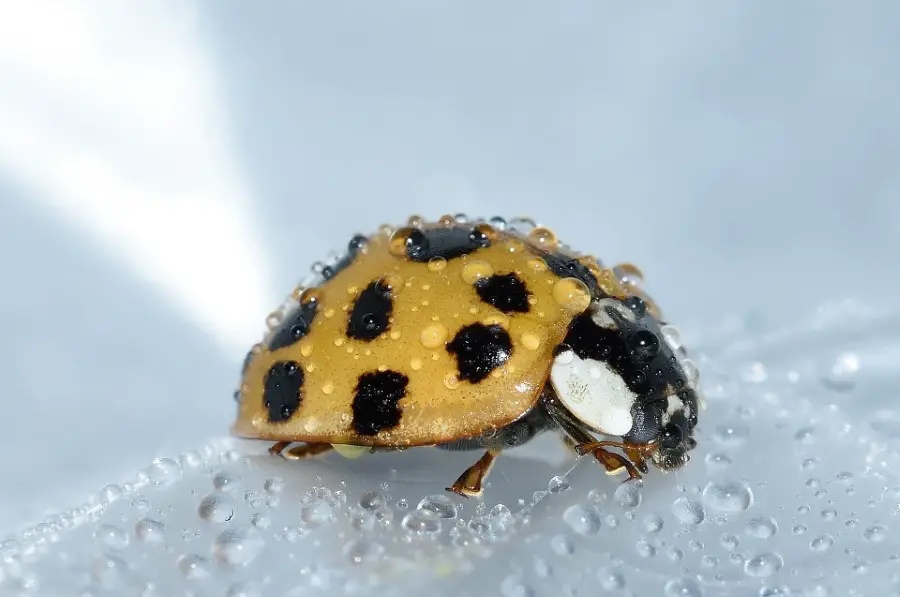
Orange Ladybird – Halyzia Sedecimguttata
The Halyzia sedecimguttata, also actually known as the orange ladybug, is a large orange ladybird with cream spots. It’s commonly found in Europe and in actual fact, their numbers are on the increase.
These species of ladybug thrive on the powdery white mildew that forms on the surface of leaves. While the larva and adult of the orange-colored ladybug mainly feed on Erisyphaceae infesting trees and bushes, occasionally they may feed on small aphids as well.
Previously, the orange-colored ladybug used to be associated with ancient woodland only but after having adapted to feed on Sycamore and Ash it is now found in other areas of the UK.
How to Identify
The orange ladybird is pale orange with 14 to 16 white spots. They’re usually oval in shape with a length of 5-6 mm.
The most striking feature about these ladybugs is their orange-colored body, with creamy white spots. The number of spots varies, but they’re usually in the range of 14-16, often with orange-colored spots on the head covering (pronotum)
Another distinctive feature is the often slightly transparent edges of their body. Their physical appearance helps them blend with the surrounding habitat and provides greater camouflage against predators.
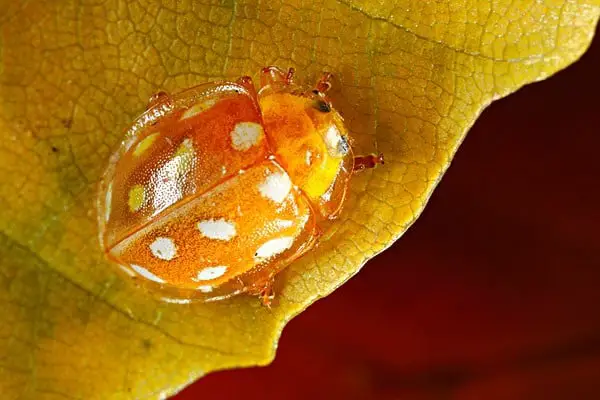
Orange Ladybug – Cream Spot Ladybird
Scientifically known as Calvia quattuordecimguttata. The cream-spot ladybird is similar and can appear more orange if it’s an older ladybug, but it is generally a darker browny-orange color and is a little bit smaller. Cream-spot ladybirds are more often found on bushes and at woodland edges.
You’ll find these throughout the northern hemisphere as they were introduced to North America from Europe and across Asia.
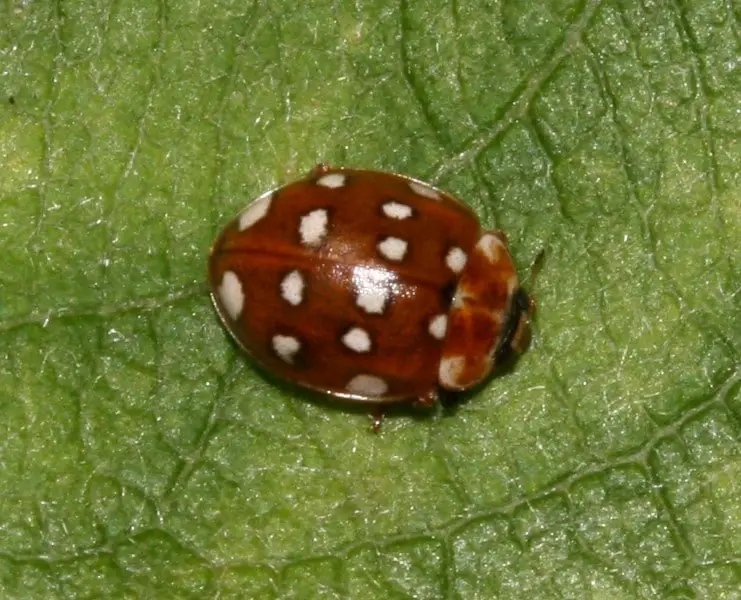
image by S.Rae
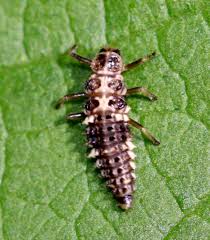
image by david Nicholls, naturepost.org.uk
What Other Orange Asian Ladybugs Look Like
As a whole, out of the 5000+ available species, there are more than 400 species in the North American region alone
The Asian lady beetle can be many shades, and a number of variants of orange in color, here are some of the Asian Lady Beetle varieties that have bodies with shades of orange.
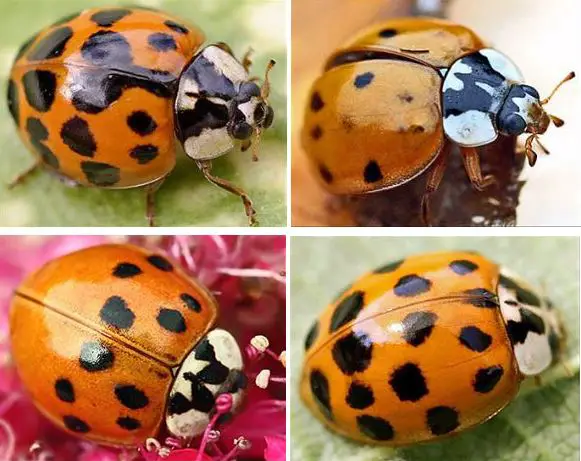
Orange varieties of
Harmonia Axyridis
With varieties of black spots
image source: wikipedia
You can find the same kind of variations when it comes to other colors such as red, yellow, black, and brown. It shows that there are so many types of these amazing bugs to be seen around.
Where Can Orange Ladybugs Be Found?
So, where will you find an orange Ladybug? Ladybugs live in a variety of habitats. This includes fields, gardens, forests – mainly hardwood forests, grasslands, and occasionally in people’s houses. They populate mostly where they’re prey is more abundant.
It hibernates in dense areas. The ladybird focuses on finding a habitat in which its food is abundant.
Since its release in North America during the
Not surprising when you consider how far and how fast they can fly!
Are Orange Ladybugs Dangerous?
Orange Ladybugs are no more dangerous than any other species from the Asian Lady Beetle family. Even though they can be more aggressive than the native red Ladybug, they’re unlikely to be aggressive, other than to their normal prey – aphids, mealybugs, and similar.
However, Asian Lady Beetles are more likely to bite than the Native red Ladybug.
Do Orange Ladybugs Bite?
Yes, Ladybugs bite humans. Particularly the more Aggressive Asian Lady Beetle.
The ladybug, including the orange Asian Lady Beetle, bites from its sharp but small mouthparts. The effects of the bite may seem akin to a sting but it isn’t, and will likely leave a small red mark on your skin. They don’t have the strength to sink through human skin.
Ladybugs rarely bite in fact, but when they do it may not be pleasant. The bite itself can seem mildly painful.
As it is a bug bite, there’s always a chance you might develop a reaction to it. It could be in the form of an infection, a rash, or swelling of some kind. If this happens, then it’s best to seek appropriate medical advice.
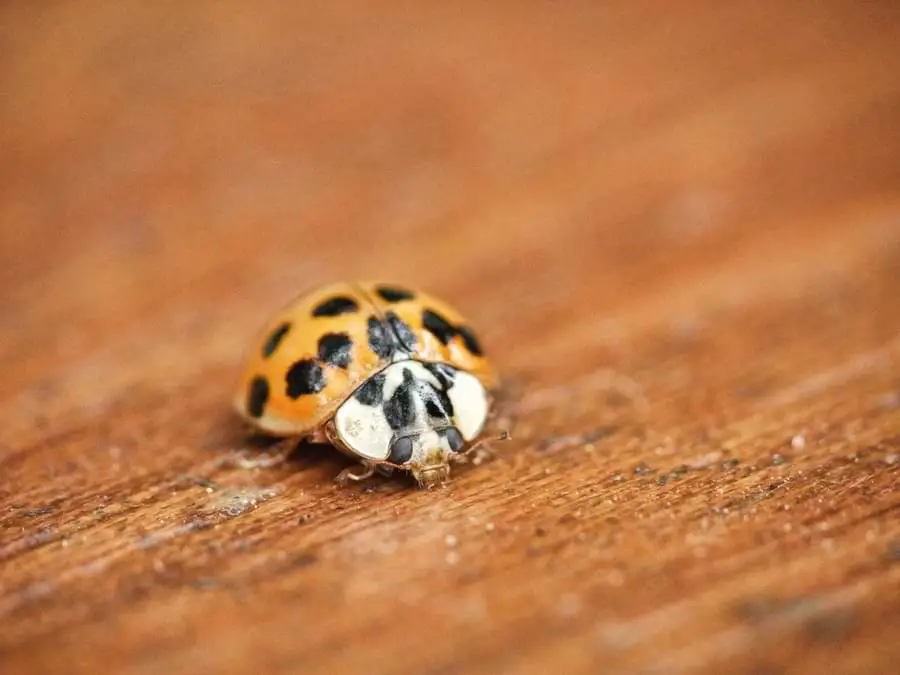
Are Orange Ladybugs Poisonous?
No, Orange Ladybug Bites are not poisonous. Although the orange ladybug (Asian Lady Beetle) can bite humans, it does not cause any lasting harmful effects, except in those who are prone to have an allergic reaction. If this occurs then seek medical advice.
The bite from an Orange Ladybug can sometimes be misinterpreted as a sting. Do not worry, it may cause a nip to the skin, but Orange Ladybugs do NOT deliver any kind of sting.
When an Orange Ladybug bites you, they may not actually be able to break the skin anyway, they would mostly ‘nip’ at the skin which might cause a slight red area. However, there is no fluid on the mouthparts that would be transferred into the skin.
Also, although Orange Ladybugs can carry Fungi that have attached themselves to their Elytra (wings) This is not transferable to humans, they do not carry any other known diseases or parasites that can be transferred to humans. For the most part, you should be 99.99% safe.
Below is an image I took of an Orange Ladybug (Harlequin, or Asian Lady Beetle) that has a fungal infection. But this is not transferable to humans and no poisons are present in Ladybugs that are transferrable.
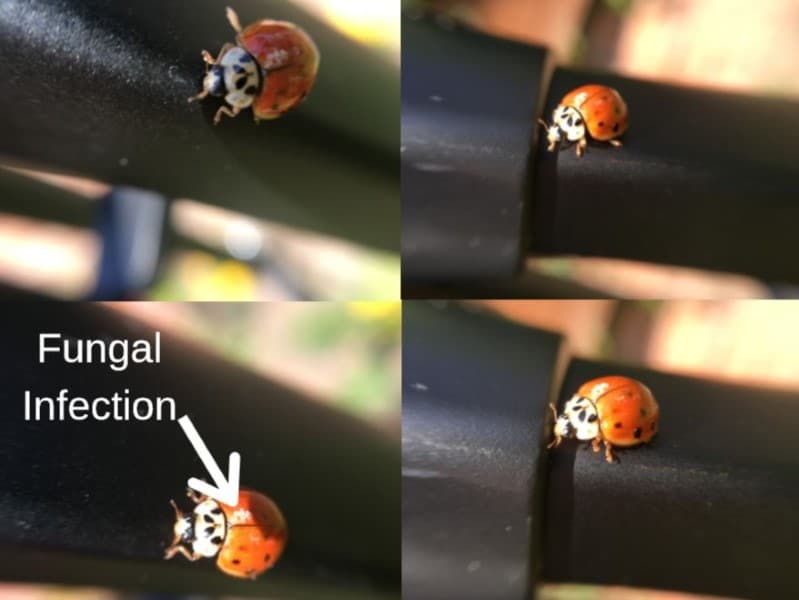
This orange Ladybug actually landed on my camera tripod!
An orange Ladybug bite cannot spread any poisons or diseases to humans. However, it’s worth noting, the dust which gets collected from a mass of dead ladybugs that have hibernated indoors and subsequently died can sometimes trigger allergies in people.
It can also be a trigger for Asthma patients. So if you belong to one of these categories then it’s something to be aware of and to seek medical advice if required.
Other Orange Beetles
Now we’ve talked about the main orange Ladybugs the Asian Ladybug, let’s talk about what they might also be, so you can understand if it is a Ladybug.
The two main types of orange beetles you don’t want in your garden, or crops are the Squash Beetle and the Cucumber Beetle. Alongside their larvae, these beetles will eat their way through your green vegetable leaves, leaving a ‘skeletal’ pattern on the leaves of your cabbages and other green vegetables.
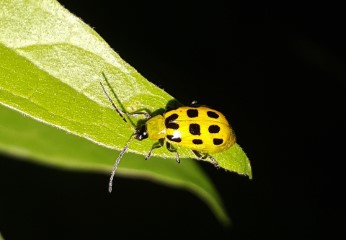
They come in yellow or orange
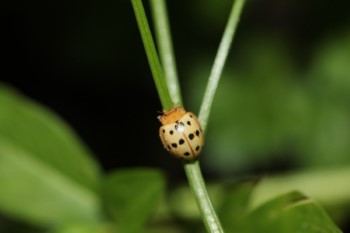
Wherever you see these bugs you should remove them, as they’re considered garden pests not beneficial insects.
You can read more about these two bad bugs in my article here.
Once you’ve ruled out if it’s a Squash Beetle or a Spotted Cucumber Beetle then you can breathe a sigh of relief and see the rest of this article to understand what type of Ladybug it might be.
What Do Orange Ladybugs Mean?
What does it mean when an orange ladybug lands on you? The most common form of symbolism the ladybug carries is good luck. This is true for the orange ladybug as well.
There is no special meaning dedicated to the Orange Ladybug in particular, other than the normal meanings for Ladybugs landing on you or in dreams.
There are plenty of meanings for ladybugs though, in dreams, totems, and spiritual and physical contact. I’ve written all of the Ladybug meanings available in my article What Ladybugs Mean, in Luck, Love, Signs, and Symbols.
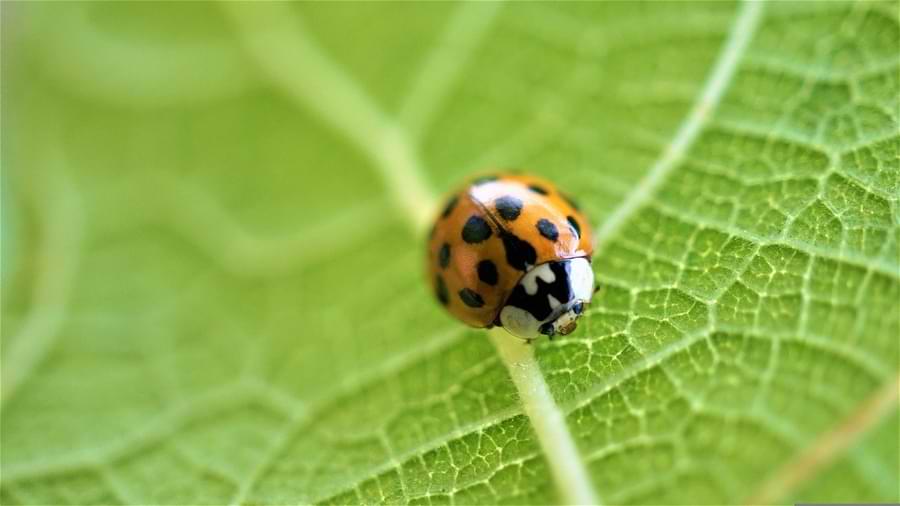
Are Orange Ladybugs Male or Female?
As orange Ladybugs are the same as other Asian Lady Beetles, they are in fact a mix of both sexes. It is
But there are some outward signs you can follow as a guide. The males are generally smaller in size, which is
Male Ladybugs will have:
- A greater amount of hair on their underside
- Prominent bands between the body segments
- A small notch on the lower abdomen segment
Female Ladybugs will have:
- A small amount of hair
- A rounded posterior segment
- Fewer visible bands between body segments
- Smooth abdomens
Older ladybugs generally have faded shells and spots too, so that is something to be aware of.
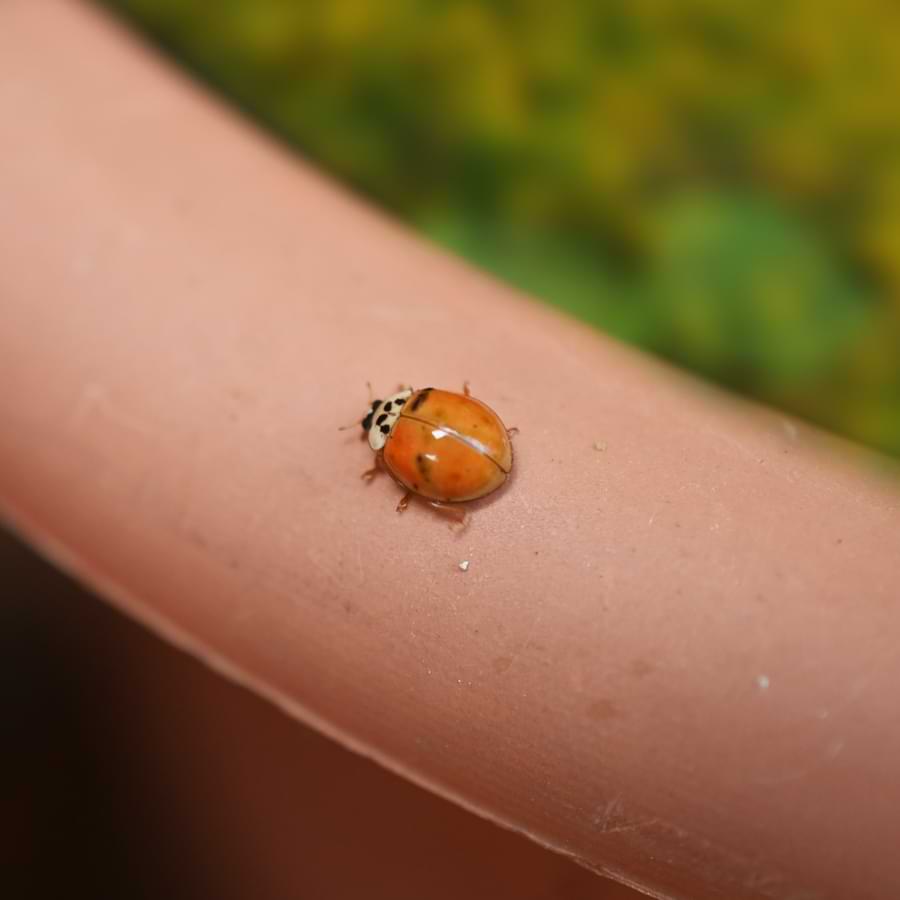
So you may want to take a closer look at these if you’re happy enough to get close to insects! I wrote more extensively about this in my article covering mating and reproduction called When Do Ladybugs Mate.
Conclusion
All in all, ladybugs are fascinating creatures to look at and learn about. They’re attractive to the eye. With a range of colors (including Orange!).
There are so many distinct features between the differently colored ladybugs. It is good to know that so much variety exists within the ladybug family.
You can find out more about the different species of ladybugs from my other articles.
If you enjoyed this article then you might be a fellow Ladybug Lover. If so, then please share it with your friends!
Related Questions:
Difference between Orange and Red Ladybugs? The orange ladybug is a variant member of the Asian Lady Beetle Family. It is generally larger than the native red ladybug. It also has a distinct ‘M or W shaped’ white mark on the area above the head called the pronotum. They are also more aggressive than Red Ladybugs. They are beneficial insects.
Difference between Yellow and Red Ladybugs The yellow ladybug is generally smaller and likely to be one of the British 22 spot Ladybirds. Other yellow Ladybug species have between 16-29 spots. They’re all beneficial insects, but should not be confused with the Cucumber Beetle which is considered a pest.

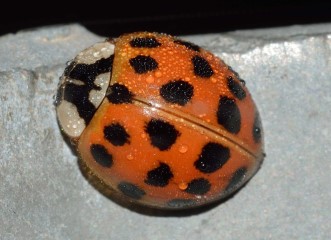

Loved the information in this article. I’ve always enjoyed ladybugs, let them walk on my hands and felt saddened when they would fly away. There was one walking on my piece lilly tonight.
Hi Vincent, thank you for the comment, I’m really glad you liked the article. So many people love ladybugs it’s great! most of us smile when they land on you!
Just be sure that the one on your Peace Lilly isn’t a Lilly beetle – they are bad bugs! You can always check that on my article here.
Thanks again 🙂
This article was great!! I found one at school and was hanging out with him til I could release him back outside! He was great to have around! Luckily I didn’t get bitten!
If an asian ladybird beetle was accidentally ingested, would it cause any symptoms/problems?
You would have to eat a lot of Asian Ladybugs – or any ladybirds for that matter before it had any effect. A single ladybug or a few would make very little difference.